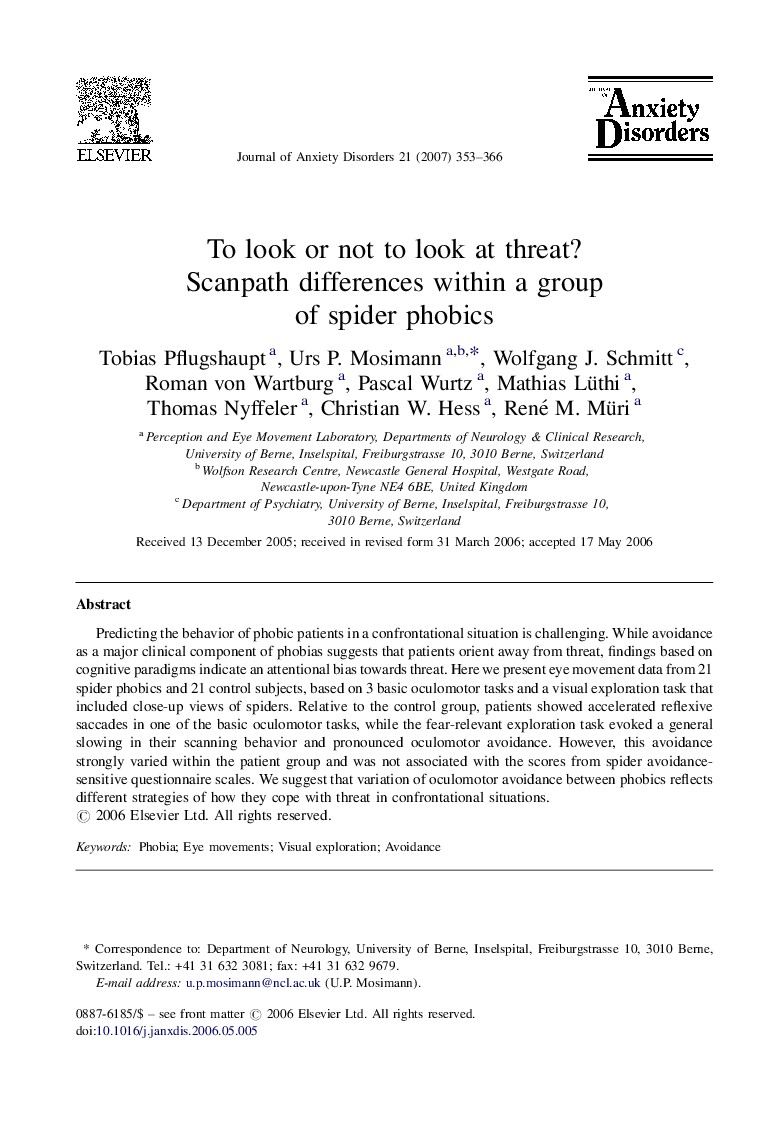| Article ID | Journal | Published Year | Pages | File Type |
|---|---|---|---|---|
| 909856 | Journal of Anxiety Disorders | 2007 | 14 Pages |
Predicting the behavior of phobic patients in a confrontational situation is challenging. While avoidance as a major clinical component of phobias suggests that patients orient away from threat, findings based on cognitive paradigms indicate an attentional bias towards threat. Here we present eye movement data from 21 spider phobics and 21 control subjects, based on 3 basic oculomotor tasks and a visual exploration task that included close-up views of spiders. Relative to the control group, patients showed accelerated reflexive saccades in one of the basic oculomotor tasks, while the fear-relevant exploration task evoked a general slowing in their scanning behavior and pronounced oculomotor avoidance. However, this avoidance strongly varied within the patient group and was not associated with the scores from spider avoidance-sensitive questionnaire scales. We suggest that variation of oculomotor avoidance between phobics reflects different strategies of how they cope with threat in confrontational situations.
